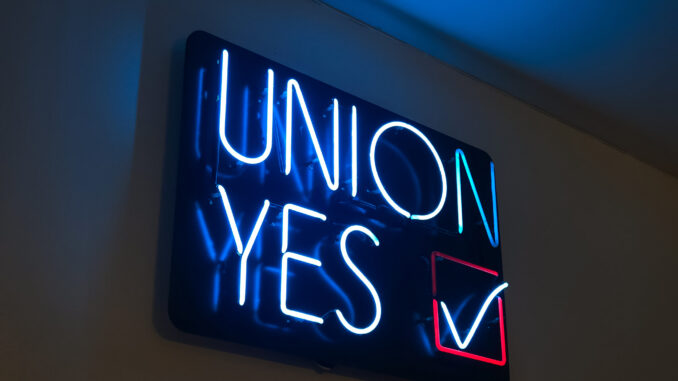
By Hank Russell
A recent study found that one in five New York workers belongs to a union. Further, the Empire State has the second-highest union membership rate in the nation and exceeds the nationwide average.
Using data from the U.S. Bureau of Labor Statistics and UnionStats, Construction Coverage recently released a study showing that 1,705,865 employees — or one in five — were part of a union last year. Percentagewise, 20.6% of workers in the state were unionized in 2024; that was second to Hawaii, in which 26.6% were unionized.
Following New York were Alaska, with a 17.6% unionization rate, Connecticut (16.5%), New Jersey (16.2%), Oregon and Washington (15.9%) and Massachusetts (14.6%). Construction Coverage attributed the high union participation rate to labor laws that benefit unions, strong union representation in the public sector and a very established history of organized labor in the education, construction and public administration sectors.
The study also found that New York exceeded the national average. According to Construction Coverage, in 2024, only 9.9% of the U.S. workforce was comprised of organized labor. That was a precipitous drop from what it was in 1979, when nearly one-fourth — 24.1% — of all American workers were unionized. In terms of numbers, nearly 14.2 million employees participated in a union, which is down from 20.9 million in 1979.
Additionally, 21.9% — or 1,815,042 workers — of New York’s workforce are represented by unions, based on the Construction Coverage report. Again, Hawaii had the highest percentage of union representation at 27.6%.
Following New York in union representation rates are Alaska (19.4%), Washington (18.3%), Connecticut (17.8%), Oregon (17.5%) and New Jersey (17.3%).
“Labor unions in the United States have experienced significant changes over the past several decades,” wrote the study’s author, Jonathan Jones. “Once a pillar for American workers, unions have seen their influence wane due to a combination of economic, political, and technological forces. Employer opposition, the rise of contract and gig-based work, globalization, and evolving labor laws have all contributed to a steady decline in union membership. These shifts have affected a wide range of occupations—from skilled trades like carpentry and plumbing to public-sector roles such as education and emergency response.”
However, Jones pointed out that there has been “a resurgence” in an “interest in organized labor,” stating, “ Growing public support for unions, high-profile organizing efforts at major corporations, and nationwide strikes in education, transportation, and entertainment have all signaled renewed momentum.”
The labor movement experienced a political shift this year when President Donald Trump signed an executive order eliminating collective bargaining rights for over 1 million public-sector workers. Jones said this is “a move that union leaders view as part of a broader strategy to curtail organized labor across the country.”

